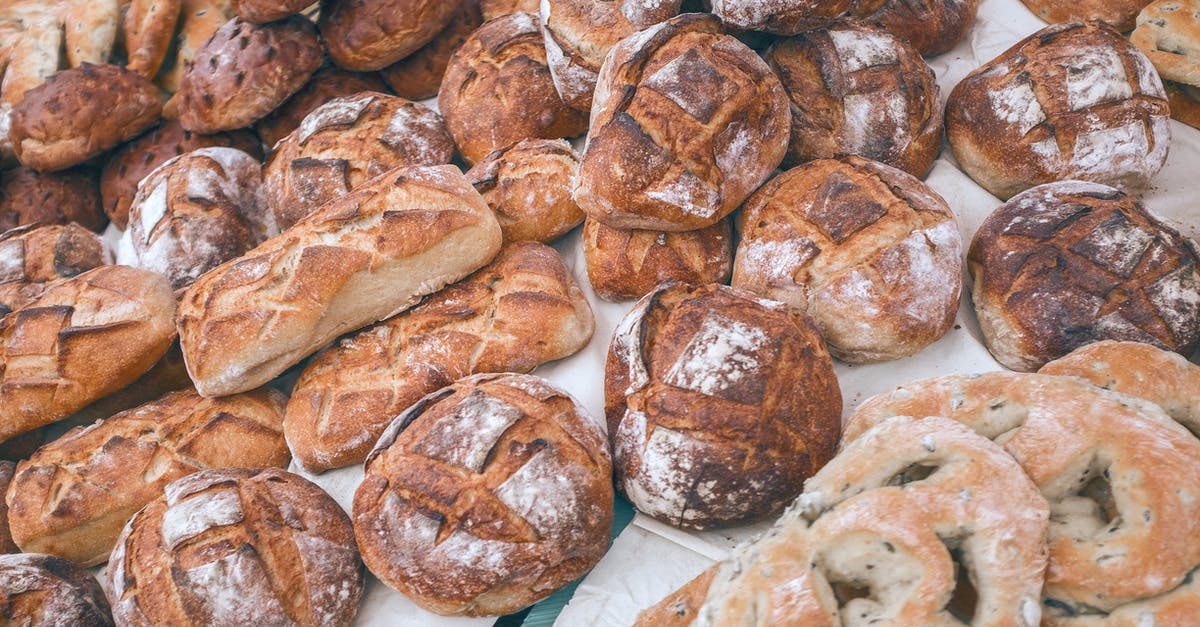Is US flour significantly different than it used to be, or than flour outside of the US?

I encountered this statement elsewhere:
The wheat in the US has been genetically modified to be much higher in gluten. People who live in other countries and then come here cannot use their old recipes because our flour is so different than theirs.
Is the second sentence true for a non-professional cook purchasing all purpose flour in a US grocery store? Would a bread recipe calling for AP flour used by someone from outside of North America need to be modified to work with the AP flour typically available in the US?
Please address the first sentence only if it's relevant to your answer regarding the second sentence.
Best Answer
The summary would be that there is a larger variety of flour (measured by gluten content) in the US than in Europe.
SAJ14SAJ described the gluten categories of American flour, although exact figures for the category limits are hard to pin down. Peter Reinhart says
cake flour has 6 to 7 percent gluten, pastry flour has 7.5 to 9.5 percent gluten, all-purpose flour has 9.5 to 11.5 percent gluten, and high-gluten flour has 13.5 to (rare but possible) 16 percent gluten.
(From The bread baker's apprentice, section Types of flour). I measure exactly my gluten percentages and can confirm that these are good for recipes of the respective categories.
These flours are all made from the same flour grade, with about 50% of the grain removed and only the soft center used for fine bread. The difference comes from the grain type used, hard spring wheat (high in gluten) or soft winter wheat (low in gluten). In Europe, where only soft winter wheat is grown, all the flour is in the 9-11% range. But mills will sometimes enrich certain types of flour with added gluten, or by blending with imported flour, or by milling more of the bran (wholer flour always has more protein) in order to make some specialized high-gluten flours, e.g. Italian pizza flour. These flours are, aside from whole wheat flour, not widely available to home bakers.
I can well imagine that a European trying to bake a European recipe with American bread flour will get bad results. But if they get the AP flour, there will be no problem in the gluten.
There are many other properties of flour which differ, beyond the gluten content. But recipes are never so sensitive to them that they'd fail. If you can't tell the difference between two brands of flour in your home country, then you won't be able to tell the difference between flour with the same gluten content from the other continent either, if both are unbleached and of the same grade (= amount of bran included and particle size).
All in all, this claim sounds like an unfounded emotionally-loaded attack. It is possible that the person who made it indeed failed because of gluten content, because they didn't know that they should be buying AP and not bread flour. Or that it failed for another reason and they were looking for a scapegoat, and garbled some half-remembered knowledge (by the way, while the American wheat is genetically different, the gluten level difference was achieved centuries ago by selective breeding) to excuse their failure.
Pictures about "Is US flour significantly different than it used to be, or than flour outside of the US?"



Is American flour different?
Since most flour in America comes from hard, red wheat, and 70\u201380% of it is winter wheat, American flour is typically much stronger than European flour, with much higher levels of protein (i.e. gluten).Is flour different than it used to be?
The improvements are seen in volume, color, texture and the shred of the bread made from the wheat. - When asked about any difference in modern day flour, Wolf Doerry, a food scientist for the American Institute of Baking, quickly answered ''Oh yes. Flour has changed a lot.Is American flour same as plain flour?
All-purpose flour or plain flour (both known as white flour) is one of the most generally used types of flour in baking....All purpose flour vs plain flour.All-purpose floursProtein contentWhite Lily Enriched Bleached Plain All-Purpose Flour7-8.5%8 more rows•Feb 4, 2022What is the difference between American and European flour?
American wheat is higher in gluten. The majority of American wheat grown is hard red wheat, which is high in protein and thus gluten. In Europe, the majority of wheat grown in Europe is soft wheat, which is lower in gluten.American flour Vs French Flour, I tell you what I think!
More answers regarding is US flour significantly different than it used to be, or than flour outside of the US?
Answer 2
There are a variety of flours here, ground from different varieties of soft and hard wheat with varying protein levels. You can find low protein and high protein flours. Grocery stores commonly carry:
- Cake flour, about 7-8% protein
- All purpose, about 10-12% protein
- Bread flour, about 14-16% protein
These variations are created based on different strains and blends of wheat.
So a flour with an appropriate level of gluten for almost any purpose can be purchased, or blended from the available choices.
Different brands and millers formulate their all purpose flour differently. The the two most common US nationally distributed brands, Pillsbury, and Gold Medal, have about 10.5% protein in their all purpose; a third, King Arthur, has about 11.4.
Professional bakers have access to a wider array of products, with different particle sizes as well as protein content.
Answer 3
The statement is false, no country in the world commercially uses any form of GM wheat, there is no need too
Most GM plants to date has been of a very basic nature, and mostly simply making the plant herbicide resistant. We aren't that clever yet to do things like make higher gluten content. The best we have is rice with a higher vitamin A content
I doubt if there is much of a market for higher gluten content wheat that can already be sourced from natural seeds. So I would be surprised if any laboratory is even playing with this
Living in a country where there is a lot of research in GM plants, the one obvious conclusion is that it is easier to use GM to identify what genes you actually want, and then use traditional plant hybridisation techniques to get the plant with that gene naturally. This has a more successful outcome in many ways. Again we aren't that clever yet!
Sources: Stack Exchange - This article follows the attribution requirements of Stack Exchange and is licensed under CC BY-SA 3.0.
Images: Maria Orlova, Nicole Michalou, Nicole Michalou, Klaus Nielsen
